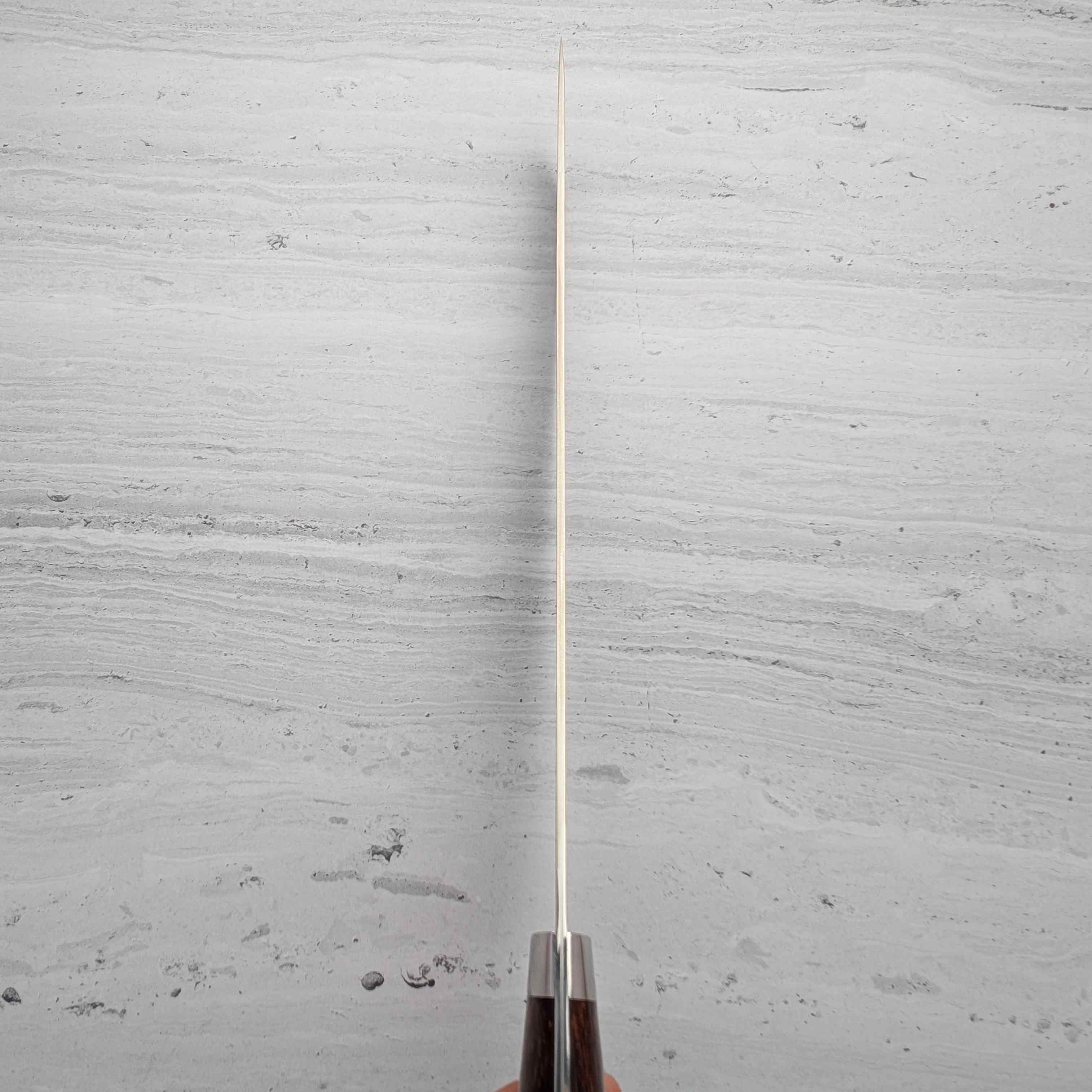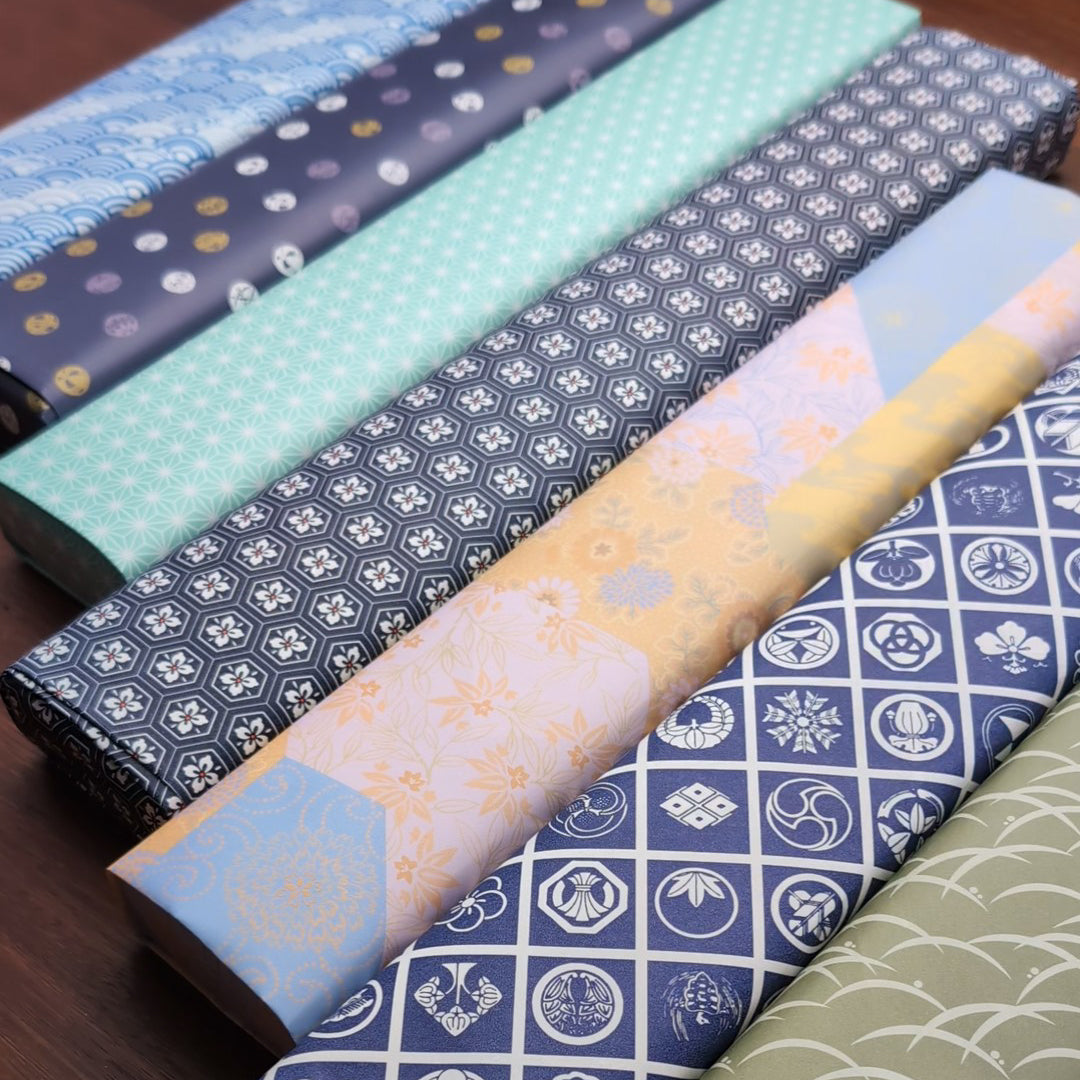











Takeshi Saji - SG2/R2 Black Damascus Sakimaru 240mm Sujihiki
Purchasing as a gift?
Our Comment
This highly sought-after knife is instantly recognizable to any Japanese kitchen knife enthusiast and collector, thanks to its unique and glamorous Western handle and Damascus finish. Designed and crafted by the esteemed Takeshi Saji, this Japanese machete-like sujihiki knife showcases his profound expertise in both kitchen and outdoor knives, including machetes. Saji received the award of Dento-Kougeishi 伝統工芸士 at the age of 44 and is now in his retirement years, dedicated to passing on his invaluable knowledge and skills to the next generation.
Sakimaru is identifiable by its distinctive round blade tip, which resembles that of a katana, the traditional Japanese samurai sword.
The blade is ground into a gentle convexity across its height in the primary bevels and sharpened into the small secondary bevels, allowing very reduced pressure at the cutting edge while gently separating the ingredients midway.
Featuring an SG2 steel core, it offers outstanding edge retention and corrosion resistance.
- Edge retention: Poor/Average/Good/Great/Excellent
- Corrosion Maintenance: Low/Average/High
Specifications
| Blade Length: | 250mm |
| Overall Length: | 380mm |
| Blade Height: | 46mm at heel |
| Spine Thickness: | 2.2mm at heel |
| Weight: | 215g |
| Steel Category: | Stainless steel |
| by powder metallurgy method | |
| Steel Type: | SG2 (aka R2) |
| Hardness: | 62-64HRC |
| Construction: | Sanmai (Three layers) |
| Outer layers: Damascus | |
| Finish: | Damascus |
| Handle Type: | Western handle |
| Ironwood | |
| Made in: | Echizen, Japan |
| Other note: |
Sharpening
- Touch up and sharpen regularly to remove micro cracks that develop from normal use and corrosion. This will minimise the chance of chipping. We recommend sharpening on whetstones.
- Using fixed cross-blade type pull-through sharpeners is strongly not recommended. They can chip knives instantly only with a little twisting motion.
Care and Use
Use
- Do not attempt twisting or torqueing while cutting.
- Do not cut bones, frozen foods or any other hard objects. Use an appropriate knife like thick blades.
- Using a timber or synthetic rubber cutting board is recommended. Plastic should be fine, but glass, ceramic, or bamboo boards should be avoided.
Cleaning
- Dry well after washing. You may use hot water to assist.
- No dishwasher use.
Storing
- Apply a thin coat of camellia oil, particularly when storing a carbon steel knife for a long period.
- Storing in a cover or sheath that has been contaminated with rust is not recommended.
Our knife otaku observation
Choose options













ABOUT THE MAKER AND BRAND
Saji Uchi Hamono
佐治打刃物
Master Takeshi Saji (佐治 武士), a third-generation blacksmith of Saji Uchi Hamono, was awarded the prestigious title of Dento-Kougeishi (伝統工芸士) by the Japanese government at the age of 44. His profound expertise in both kitchen and outdoor knives, including machetes, sets him apart from the rest. His knives are highly sought-after around the world, and his designs are instantly recognizable to any Japanese kitchen knife enthusiast and collector. Now in his retirement years, Saji is dedicated to passing on his invaluable knowledge to the next generation.
What is


Gift Wrapping and Card
We offer gift wrapping for your purchase. You can also purchase a Hazuki Gift Card to let your recipient choose their own gift.

